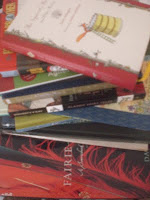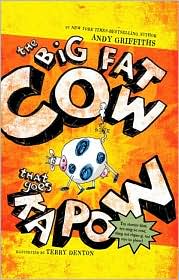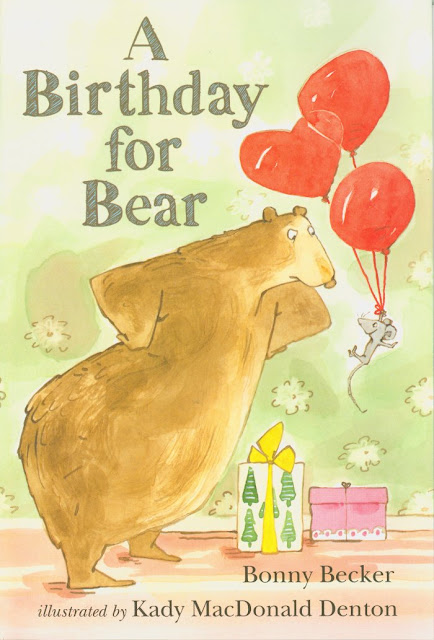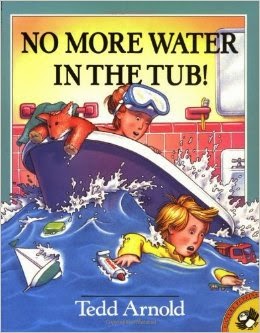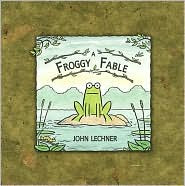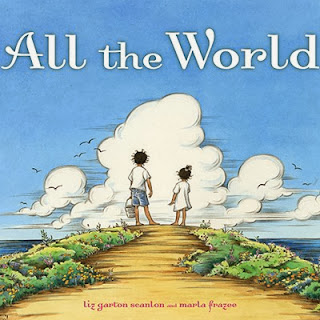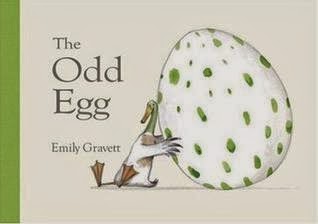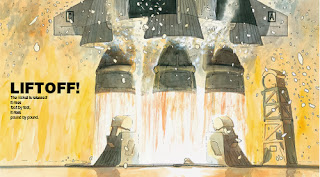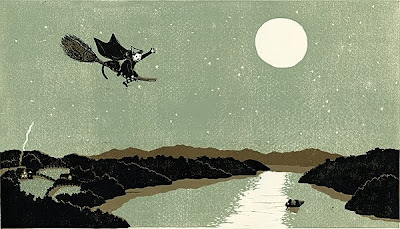A Froggy Fable ,
John Lechner's first pictue book, tells the story of a frog who is frustrated by the changes going on all around him. Without giving the whole story away, I can say that, in the end, he discovers that some changes aren't so bad after all. Simply told and elegantly voiced,
A Froggy Fable works on many levels without being didactic once. I have never been a fan of children's books that claim to teach a lesson, celebrity authored picture books and
The Berenstain Bears being at the top of my list, but John Lechner's book, just like Arnold Lobel's, can be used to "teach a lesson" - if you want it to. And, if you don't want it to, it's a great read out loud and one you will never tire of sharing.
John Lechner is also the author of the excellent forest based kind-of comic book
Sticky Burr series as well as his second picture book, also set in a forest, the magical
Clever Stick which, like
A Froggy Fable, has a subtle lesson woven into a wonderful story.
On the surface, Algy Craig Hall's marvelous Fine As We Are reads like another parable to help children cope with change - especially the change brought about by the arrival of a new sibling. But really, I think the same important ideas that John Lechner presents in A Froggy Fable are also in action in Fine As We Are. We are all capable of learning to accept changes and change can be a good thing. It seems simple, but for little people who see the world in concrete, black and white divisions (read: happy as a clam or pitching a major hissy fit) I think that this concept bears repeating in as many soothing ways as possible and Algy Hall's book, in addition to fitting in with my frog theme, does just that.
Hall's book, his first for children, begins with a very happy Little Frog and his loving mother, and I have to tell you, the depictions of affection between Little Frog and his mother are very sweet. I don't know how Hall manages to convey such love with simple line drawings of frogs, but he does. One day, as mom and Little Frog sit on a rock by the pond she asks him (as most of us foolishly do at some point in our parenting careers), "Would you like a baby brother or a sister?" Little Frog responds, "No. We're just fine as we are." Mom begins to look worried, stricken even, and the reader notices the multitude of frog eggs floating gently at the surface of the water just beneath the rock upon which this conversation takes place. There is no turning back now, and the illustrations of the gaggle of joyously jumping froglets is enchantingly rendered, as are all the illustrations in this book, but these especially so. The pictures I could find do not do Hall's art justice at all.

Mom seems pleased with this hoard of newcomers, so Little Frog tries to adapt. However, they follow him everywhere, are really noisy and, worst of all, eat his breakfast before Little Frog has a chance to. "They only want to be like you," mom says, trying to get Little Frog to see the other side of the situation. "But it's not fair!" Little Frog responds. Mom can't hear him amidst the noise of the babies, though. Hall captures the reality of sibling rivalry and parenting more than one child sublimely. That he himself is a parent as well one of many siblings who grew up in a large family is evident in the precision with which he tells his tale. When Little Frog finally finds ways to love his siblings (playing Leap Frog, naturally) he says to his mom, "We are the biggest family in the world." She answers cautiously, "Do you think we are too big?" "No," says Little Frog, "We're just fine as we are." And this book is more than just fine as it is, it is worth buying and reading over and over again to each and every one of your children.

Stick is the first picture book by
Steve Breen, the Pulitzer Prize winning editorial cartoonist (in 1998 and in 2009), and author of the strip
Grand Avenue. First of all, I have to tell you how gorgeous this book is - both painterly and expressive by turns. The layout of
Stick is evocative of David Wiesner's books and, like his Caldecott winners
Tuesday,
Flotsam and
The Three Pigs, it is largely without words and needs to be added to my list of books in my article
How to Read a Book Without Words (Out Loud).
The book begins in an efflorescent swamp with two frogs on a lily pad and the words, "Stick liked to do things on his own..." From there we watch as he tries to snag his own lunch only to be snagged and dragged on a journey that is mapped out on the end papers of the book. A failed attempt to have a dragonfly for lunch takes Stick on the flight of his life, out of the swamp and through New Orleans, among other stops. The fun of the book is guessing what form of transportation will Stick be stuck on next as he goes from dragonfly to balloons to model airplane. The reactions of the people and animals he encounters on his journey are also a hoot. The author information at the back of the book reveals that Steve Breen has long been fascinated by the Deep South and was about to embark on his first trip there to do research for Stick when Hurricane Katrina struck. In honor of all those who lost their lives and homes, he is donating a portion of his royalties to a Katrina-related disaster-relief organization. That and the fact that this delightful book is now available in paperback make it a must-have!
